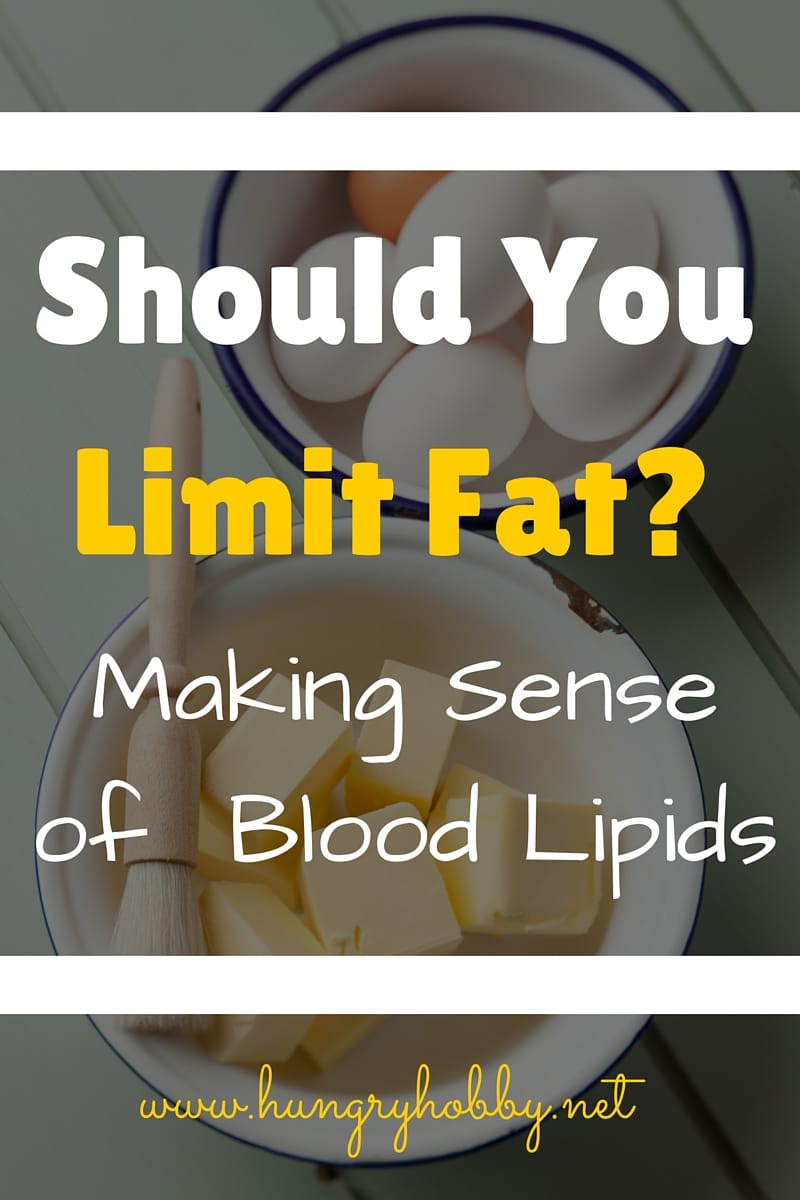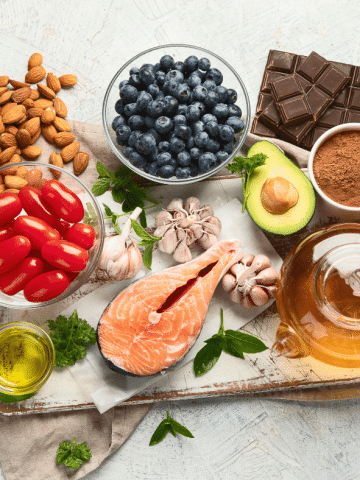Hi Friends, this post is going up a little later than normal because I’ve switched my workouts to the AM. I will forever be an AM workout girl, I love it so much, it puts me in the best mood for the day and I don’t have to worry about fueling or energy levels I just rock out with a black coffee or some UCAN if I need it. This morning I did another awesome HIIT workout that covered 3 miles, I’ll be sure to share soon! (Be sure to follow me on snapchat for sweaty pics —> hungryhobbyrd)

Warning TONS OF TEXT BELOW!
Today’s topic is a bit more on the professional side of things, this week in my intro nutrition class I’m teaching at a local community college, students got to obtain their blood markers (Total Cholesterol, LDL, HDL, TG, Cholesterol/HDL ratio). For starters, I promised them a blog post to highlight the most recent research on what these levels mean to your health and how to modify them.
The fact is that currently accepted standards and the amount of reliable research has changed drastically in the last few decades, really in the last two years (lucky time for me to be starting my dietetics career). Low fat, low cholesterol high carb was the name of the game to prevent heart disease. However, I often recommend my Hungry Hobby RD clients do just about the opposite of that so I often end up discussing much of the most recent research with them. I’ve been thinking about writing a blog post on it for a while, so in preparation for this weeks lecture I finally composed that post! Here we go:
Total Cholesterol
I almost never review this number with my clients, it's not nearly (if at all) as important as the markers below.
LDL “Low Density Lipoprotein”
Protein that shuttles cholesterol from the liver to the body for use. Currently recommended <100mg/dL. However,it was recently estimated that 75% of cardiac patients have regular cholesterol, how could this be? It actually may be more important to know the fractionated particle size:
- Pattern A - large buoyant molecules (like balloons or cotton balls) that float “effortlessly” in the blood, in general associated with no deleterious effects and at moderate levels considered a normal part of good health.
- Pattern B- smaller denser particles, like bullets, susceptible to oxidation, slip through and lodge in arterial walls, therefore associated with greater risk of cardiovascular events
Interventions to improve LDL patterns:
- High intakes of Saturated fat may INCREASE LARGE, buoyant LDL particles
- Reducing carbohydrates may reduce small, dense LDL particles (high carb diets show a shift from pattern A to B)
- Weight loss improves the LDL pattern, especially inches from the mid-section
HDL “High Density Lipoprotein”
Protein that shuttles cholesterol back to the liver for recycling and excretion, therefore it is thought that this may lower risk of heart disease. Currently recommended: > 40 for Men, >50 for Women, I usually try to get clients to > 60 for optimal health
Interventions to Increase HDL:
- chose different biological parents (just kidding)—->largely determined by genetics, estimates up to 80%
- consistent moderate to vigorous exercise slightly increases HDL
- saturated fat intake increases total cholesterol and HDL
- don’t smoke, smoking is associated with 5 point lower HDL
- do not consume trans fat, it has been shown to lower HDL significantly (look for the words partially hydrogenated and avoid them like the plague, common foods include margarine, crisco, peanut butter, baked goods and elsewhere)
- moderate alcohol intake, especially wine, may increase HDL (however keep in mind alcohol is still associated heavily with many types of cancers)
- small studies show a slight increase in HDL with high levels of niacin intake, but little is known about the lasting effects of this and there are pretty significant side effects, at this time I don’t recommend it as a first line of intervention
TG “Triglycerides”
Storage form of fat in the body as fat tissue, skin oils, and in the blood. While triglycerides are the primary storage form of fat in the body, the molecule is 90% sugar, it serves to complete the transfer between blood glucose and fat tissue. Strongly correlated with increase risk of heart disease AND type 2 diabetes. Current recommendation is <150mg, some studies show <100 may be more optimal.
- high carbohydrate, low fat diets increase triglycerides
- swap refined carbohydrates for high quality carbs
- match your carbohydrate needs to your lifestyle
- limit alcohol consumption (which is why you don’t want to begin drinking just to raise your HDL)
- moderate exercise may increase triglycerides
- increase intake of omega 3 fatty acids can decrease triglycerides
- iron storage issues can increase triglycerides (get this tested before intervening)
- L-Carnitine may lower triglycerides, but I never recommend taking it without also engaging in lifestyle change
VLDL “Very Low Density Lipoprotein”
It is estimated that a very small percentage of cholesterol found in the body comes from VLDL, in fact, usually less than 20% . Therefore, it’s not usually the highlight of blood work when it’s reviewed, in fact, if determined at all it’s usually calculated as percentage of Triglycerides. I’ll admit, I didn’t even know much about its significance until one of my nutrition majors stumped me in class inquiring about it. VLDL produced by the liver in order to deliver lipids to the body, on average it is composed of 55-65% triglycerides, 10-15% cholesterol, 20% phospholipid and 5-10% protein. As lipid exchange with the tissues occur, its composition changes decreasing in triglycerides and increasing in cholesterol, effectively increasing it’s density and changing the name of it to an LDL molecule.
A study by the American Heart Association published in 2008 cited there may be further significance to VLDL particle type:
- VLDL1- triglyceride rich particles, often found in higher qualities in cases of diabetic dyslipidemia, increases production of small dense (pattern B LDL) particles,
- VLDL2- triglyceride poor particles (in comparison)
As of right now it simply stands that having increased VLDL is associated with increased Triglycerides & small (pattern B) LDL particles, therefore also associated to increase risk of heart disease. Interventions promoting increased insulin sensitivity, promoting pattern b of LDL and decreasing to recommended levels, as well as increasing HDL are though to effective interventions for decreasing VLDL particles. Current recommendation is less than 30mg/dL.
Insulin Sensitivity & Blood Sugar—> see this post on blood sugar control.
Blood Pressure
Normal values are currently considered less than 120/80. I always tell my clients that blood pressure is one of aspects of our health, like blood sugar, that we have a great deal of control in normalizing. I view high blood pressure as a two fold problem: first, as symptom of inflammation and second, as an indication of potential nutrient imbalances (excess sodium not enough potassium/magnesium).
Interventions to decrease blood pressure:
- All methods for decreasing inflammation in the body (see below).
- Consider switching from added sugar or artificial sweeteners to stevia, the preliminary research shows that stevia may contribute to lower blood pressure.
- STOP SMOKING—> Nicotine speeds up your heart rate and causes high blood pressure.
- Engage in stress management training including mindfulness, meditation, prayer, whatever speaks to you.
- Current recommendations still suggest decreasing salt intake. If you already have blood pressure you should decrease your salt intake, but do so naturally through eating less process foods and more fruits and vegetables. (Don’t just stop salting your popcorn and think that will make a difference!)
C-reactive protein (CRP)
Measures systemic inflammation and predictor of cardiovascular events
Lipoprotein-associated phospholipase A2 (Lp-PLA2)
A biomarker of vascular inflammation, which may be predictive of cardiovascular events and stroke.
Interventions for Decreasing Inflammation
- Increase Omega 3’s and decrease Omega 6’s —> diet choices and supplement with omega 3 (see this post for more tips on that)
- Limit preservatives, chemicals, and pesticides —> stop smoking, check out the dirty dozen & how to eat more real food
- If needed, lose weight, especially that located in the mid-section (produces inflammatory cytokines)!
- Decrease sugar intake overall
- Increase servings of vegetables and fruit (aiming for at least 2 giant fistfuls per meal) which contain phytonutrients and antioxidants which combat free radicals in the body and fight inflammation.
- Address hormone imbalances (adrenal hormones, sex hormones, and thyroid hormones) and underlying health conditions from a comprehensive approach (see my nutrition counseling website at hungryhobbrd.com).
- Address any potential food sensitivities.
- Seek advice on a correct supplement protocol for you. Certain supplements can be useful like turmeric, in addition to a few mentioned earlier like omega 3 and L-carnitine. However, supplement protocols should be high individualized, they can interact with your medication or other conditions, so make sure to seek guidance!
There are other markers available as well including fibrogen and homocysteine to help better pin down cardiovascular risk, inquire with your doctor about looking further if you are concerned or have a family history.
Key Takeaways:
For years we demonized cholesterol and saturated fat, took the fat and calories out of everything and replaced it with sugar and chemicals. While that sounds ridiculous now, at the time it sounded like we were making large strides in science and health. Recently research became clear that dietary cholesterol does not affect cholesterol levels and certain saturated fats, from natural sources (not fully hydrogenated whatever), may actually improve lipid profiles.
My thoughts? Research is awesome, I totally geek out over this stuff. However, time and time again I find that safest recommendation I can make to anyone is to eat food a large variety of food they recognize to be food, in a balanced advantageous portions and stop worrying about one particular nutrient or another. (see my post how to eat more real food) Do I think you should avoid fat and salt if your major sources are donuts and french fries? Probably. If you’re getting it from whole food sources like these ones, I’m cheering you on. If you already have issues with some of these markers, work with someone to help you devise a doable plan to better them, you have more control over your health then you think!
I really like the authority nutrition blog for links to studies suggesting evidence regarding why saturated fat wasn’t produced by the devil and the Berkeley wellness blog for great non biased information. (Authority nutrition seems to be relatively biased in their lower carb approach.) Some further reading below:
- http://atvb.ahajournals.org/content/28/7/1225.full
- http://www.berkeleywellness.com/self-care/preventive-care/slideshow/test-your-inflammation-iq
- https://authoritynutrition.com/it-aint-the-fat-people/
- http://www.berkeleywellness.com/self-care/preventive-care/article/vap-better-cholesterol-test
- http://www.berkeleywellness.com/self-care/preventive-care/article/good-cholesterol-not-so-good
- http://www.berkeleywellness.com/node/453
- https://authoritynutrition.com/7-ways-the-low-fat-diet-destroys-your-health/
- https://authoritynutrition.com/why-is-stevia-good-for-you/
- http://atvb.ahajournals.org/content/28/7/1225.full
- http://www.healthcentral.com/cholesterol/c/42538/46937/difference-ldl/
So with a word count of 1700 I'm out for the day! See you tomorrow for Friday fun!





Agness of Run Agness Run says
Your post is a real eye-opener! These health conditions need more attention definitely!